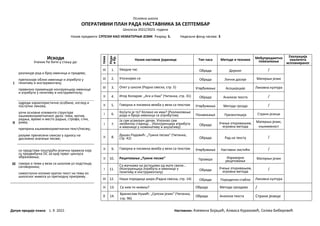The Paradox Of Trump's Energy Policy: Low Prices Vs. Industry Loyalty

Table of Contents
The Pursuit of Low Energy Prices: A Double-Edged Sword
Trump's energy policy aggressively pursued low energy prices, primarily by boosting domestic fossil fuel production. This strategy, however, presented a double-edged sword, yielding short-term benefits at the potential expense of long-term sustainability.
Increased Domestic Fossil Fuel Production
Several policies contributed to the significant increase in domestic fossil fuel production during the Trump administration. These included:
- Deregulation: The administration significantly rolled back environmental regulations, reducing the regulatory burden on oil, gas, and coal companies. This included streamlining environmental impact assessments and weakening enforcement of existing rules.
- Relaxed Environmental Standards: Numerous environmental protection measures were weakened or eliminated, leading to increased extraction and production. This included loosening restrictions on methane emissions and weakening regulations on water pollution from fracking.
This deregulation resulted in a dramatic increase in production:
- Oil production saw a substantial increase, reaching levels not seen in decades.
- Natural gas production also surged, further contributing to lower energy prices.
- Coal production, while still declining overall, experienced a temporary reprieve due to reduced regulatory pressure.
The direct consequence of this increased production was a drop in energy prices for consumers. Lower production costs, fueled by relaxed regulations and increased output, translated into lower prices at the pump and for businesses.
The Impact on Global Energy Markets
The surge in US fossil fuel production significantly impacted global energy markets.
- OPEC Response: The Organization of the Petroleum Exporting Countries (OPEC) responded to the increased US supply by adjusting its own production levels, leading to price volatility.
- Price Fluctuations: Global oil and gas prices experienced significant fluctuations, reflecting the interplay between increased US production and OPEC's strategic responses.
This influx of US energy onto the global market had mixed consequences. While US consumers benefited from lower prices, the increased supply also impacted global energy stability and potentially undermined the influence of OPEC, leading to concerns about potential market instability in the long run.
Challenges to Industry Loyalty: Environmental Concerns and Market Volatility
While Trump's policy delivered low energy prices, it also created significant challenges to industry loyalty, stemming from environmental concerns and market volatility.
Environmental Backlash and Regulatory Uncertainty
The administration's environmental rollbacks sparked significant public backlash and widespread criticism from environmental groups and scientists.
- Environmental Impact: The weakening or elimination of regulations concerning air and water quality, as well as protections against habitat destruction, raised serious environmental concerns.
- Public Opinion: Numerous polls indicated growing public concern over environmental issues and dissatisfaction with the administration's approach to environmental protection. This led to increased activism and calls for stricter regulations.
This environmental backlash created uncertainty for the energy industry. Investors became hesitant to commit significant capital to projects that faced potential future regulatory changes under a different administration. The perception of environmental risk also impacted the industry's social license to operate.
Price Volatility and Investment Risk
The pursuit of low prices through increased production led to significant price volatility in the energy market.
- Price Swings: Energy prices fluctuated considerably during the Trump administration, creating uncertainty for energy companies.
- Investment Decisions: This price volatility made long-term investment planning challenging, discouraging significant investments in new energy infrastructure and exploration.
The unpredictable nature of energy prices under this approach created substantial risk for energy companies, undermining industry loyalty and hindering long-term investment needed for sustained growth and innovation within the sector.
The Trade-Off: Short-Term Gains vs. Long-Term Sustainability
Trump's energy policy prioritized short-term economic gains through low energy prices, but this came at the potential expense of long-term sustainability.
Assessing the Economic Benefits of Low Prices
Low energy prices did provide some short-term economic benefits:
- Consumer Spending: Lower energy costs boosted consumer spending, contributing to economic growth.
- Economic Growth: The overall economy experienced a period of growth during this time, partly attributed to low energy prices.
However, this benefit may have been offset by potential negative consequences:
- Reduced Investment in Renewables: The emphasis on fossil fuels potentially diverted investment away from renewable energy sources, hindering the transition to a more sustainable energy future.
The trade-off between short-term economic benefits and long-term environmental and energy security risks remains a central issue in evaluating the policy's overall success.
The Future of the US Energy Industry Under Different Approaches
Alternative energy policies could prioritize different aspects of energy production and consumption:
- Renewable Energy Focus: A policy focused on renewable energy sources like solar, wind, and geothermal would reduce reliance on fossil fuels and lessen environmental impact.
- Energy Efficiency Measures: Policies promoting energy efficiency in buildings and transportation could reduce energy demand and lessen the need for increased production.
These alternative approaches might offer long-term stability for the energy industry and avoid the trade-offs inherent in the Trump administration's strategy. However, they also present their own challenges in terms of costs, technological feasibility, and public acceptance.
Conclusion: Re-evaluating Trump's Energy Policy Legacy
Trump's energy policy presented a clear paradox: low energy prices were achieved, benefiting consumers in the short term, but this success came at the potential cost of long-term industry stability and environmental sustainability. The pursuit of low prices through increased fossil fuel production led to environmental backlash, market volatility, and uncertainty for the energy industry. This ultimately raises questions about the wisdom of prioritizing short-term economic benefits over long-term environmental and energy security considerations. Understanding the complexities of Trump's energy policy, including its impact on both low energy prices and industry loyalty, is crucial for shaping future energy strategies. Continue exploring the nuances of energy policy to inform your understanding of this vital issue and work toward a more sustainable energy future. Consider researching sustainable energy policy options for a secure energy future.

Featured Posts
-
 Vpechatliviot Stil Na Kim Kardashi An Analiza Na Ne Ziniot Izgled
May 12, 2025
Vpechatliviot Stil Na Kim Kardashi An Analiza Na Ne Ziniot Izgled
May 12, 2025 -
 Asylum Minister Defends Decision To Bypass Inspectorate On Legal Matters
May 12, 2025
Asylum Minister Defends Decision To Bypass Inspectorate On Legal Matters
May 12, 2025 -
 Next Papal Election Exploring The Potential Candidates And Their Platforms
May 12, 2025
Next Papal Election Exploring The Potential Candidates And Their Platforms
May 12, 2025 -
 Cassidy Hutchinsons Account Of The January 6th Hearings A Forthcoming Memoir
May 12, 2025
Cassidy Hutchinsons Account Of The January 6th Hearings A Forthcoming Memoir
May 12, 2025 -
 L Animosite Entre Chantal Ladesou Et Ines Reg Persiste
May 12, 2025
L Animosite Entre Chantal Ladesou Et Ines Reg Persiste
May 12, 2025
